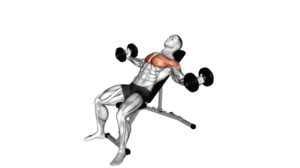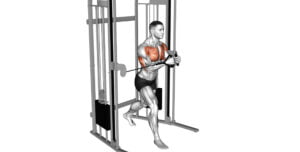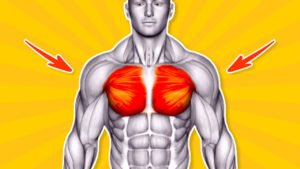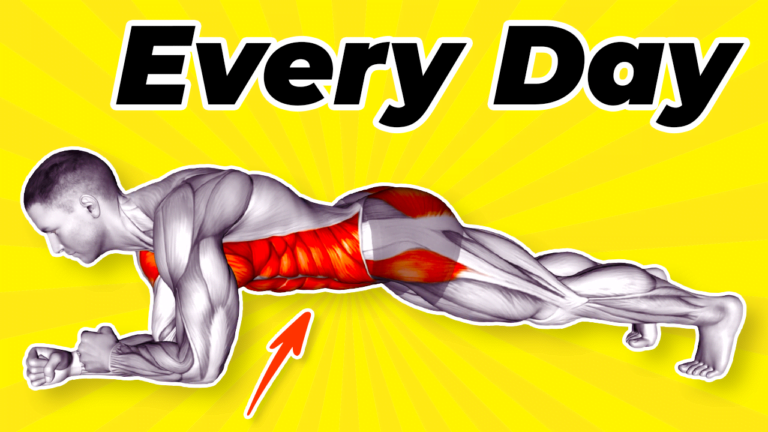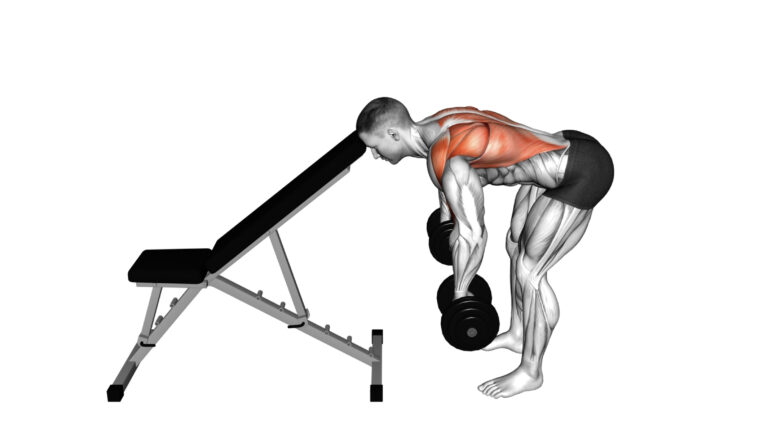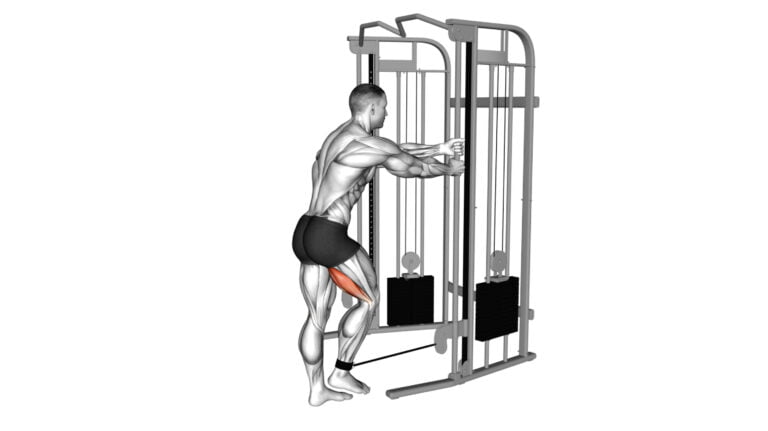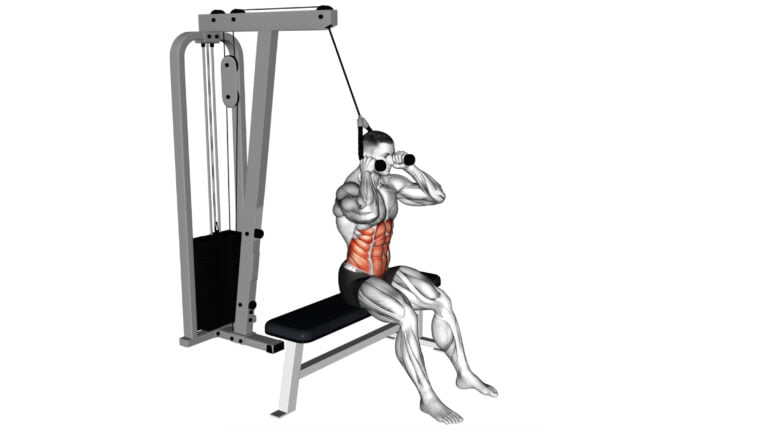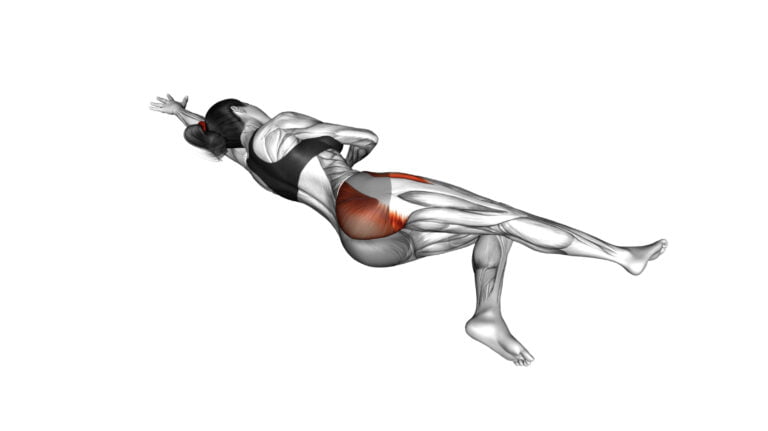10 Effective Exercises For Pec Minor
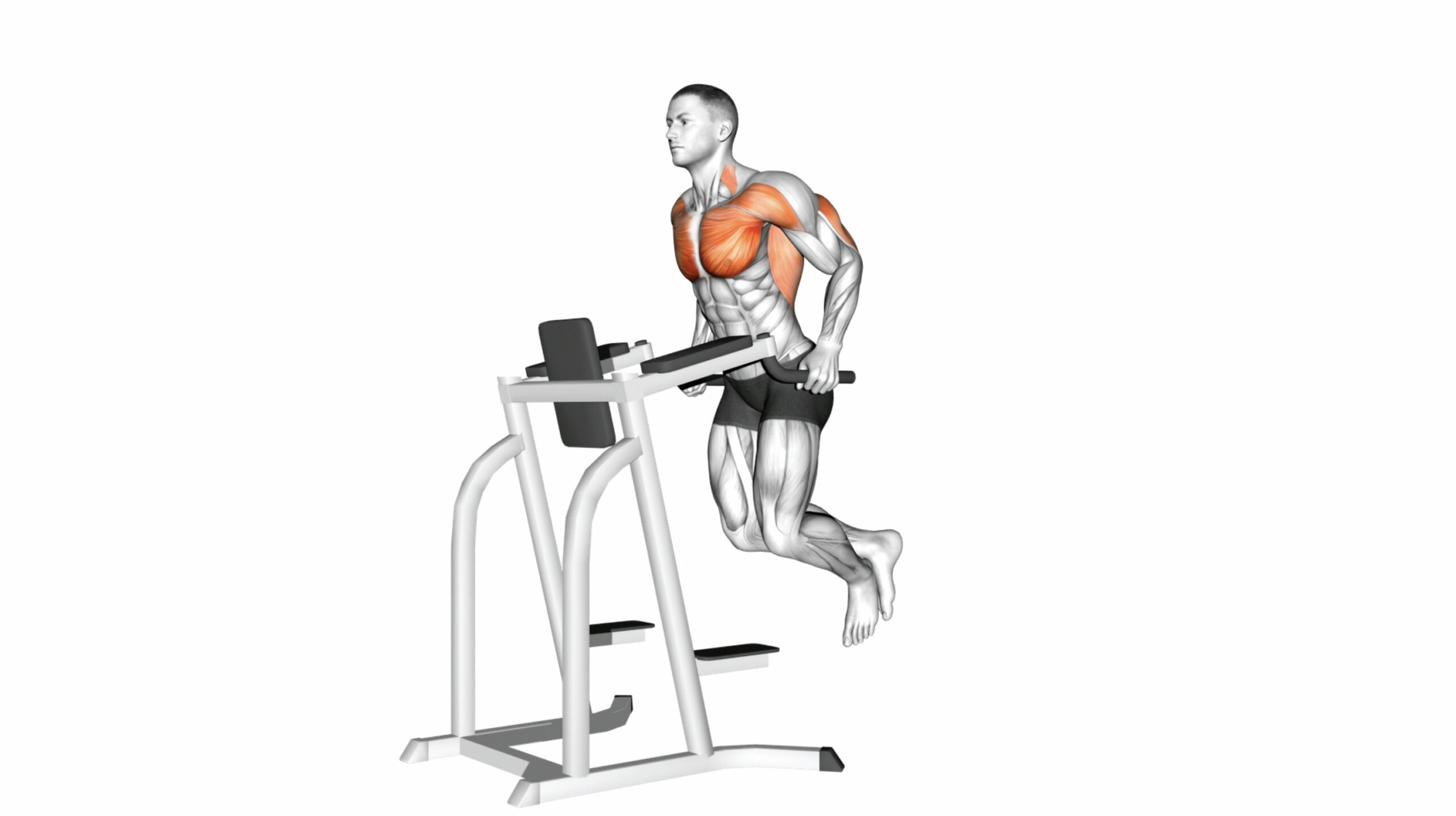
When it comes to strengthening the upper body, many fitness enthusiasts focus on the visually prominent pectoralis major muscle. However, its lesser-known cousin, the pectoralis minor, plays a crucial role in stabilizing and moving the shoulder blade (scapula).
With over a decade of experience as a certified personal trainer and physiotherapist, I’ve seen countless clients overlook this powerhouse of stability and motion. The pec minor lies beneath the pec major and is pivotal for functions such as scapular depression, protraction, and downward rotation – all vital movements for an effective shoulder complex.
Understanding how to target this smaller yet significant muscle can prevent common injuries like shoulder impingement and contribute to more balanced aesthetics. This article will delve into ten handpicked exercises for pec minor that are designed not just for strength but also for promoting functional joint health.

By incorporating these routines into your workouts, you’ll give due attention to this often-neglected muscle group – essential both in high-performance athletics and everyday activities.
Get ready to transform your upper body strength!
Key Takeaways
- Strengthening the pectoralis minor muscle improves shoulder stability and helps prevent injuries like shoulder impingement.
- Exercises such as incline push-ups with a chair, kettlebell deep push-ups, and chest dips effectively target the pec minor for better strength and upper body function.
- Proper form in performing these exercises is crucial; keep shoulders back, engage the core, move smoothly, breathe steadily, and avoid overextending to maximize benefits while reducing injury risk.
- Starting with lighter weights is recommended when beginning pec minor exercises; increase resistance gradually to build strength without compromising technique.
- To achieve optimal results for strengthening your pec minor, aim for 3 sets of 10 – 12 reps per exercise using challenging yet manageable weights.
Understanding the Pectoralis Minor Muscle
The pectoralis minor muscle plays a crucial role in shoulder stability and movement. Understanding its anatomy and function can help prevent common injuries and improve overall upper body strength.
Anatomy and Function
Tucked beneath the larger pectoralis major, the pectoralis minor muscle is a vital player in the shoulder girdle’s mobility and stability. It stretches from your third to fifth ribs up to the coracoid process of your scapula.
This fan-shaped muscle works hard during movements like pushing, reaching overhead or when you perform any internal rotation of your arm.
Engage this muscle effectively, and you’ll enhance not just chest strength but also improve posture by counteracting that all-too-common slouch. The pec minor plays an essential role in deep breathing as it lifts the ribs during inhalation.
Strengthening this area can alleviate neck pain and reduce tension headaches by stabilizing your shoulders away from your ears, making each exercise a powerful tool for both fitness enthusiasts and individuals rehabbing from injuries.

Common Injuries
Understanding the anatomy and function of the pectoralis minor sets the stage for recognizing common injuries affecting this muscle. Strains or tears can occur when too much stress is placed on your pec minor during intense workouts or sudden movements.
This muscle, crucial for movements involving pushing and overhead arm positions, may suffer from overuse injuries if not properly cared for. Workouts that involve push-ups or bench presses increase the risk if proper technique isn’t followed.
Repetitive motions in sports or exercise routines often lead to issues like tendonitis in the pec minor, causing inflammation and pain around the chest and shoulders. Athletes might experience discomfort during activities as their pectoral muscles struggle with demands for speed and power.
Myofascial trigger points in this area could also cause persistent aches, sometimes even contributing to migraines due to referred pain patterns. Careful attention to form while engaging in exercises such as chest flys or any movement requiring flexion of the arms is vital to prevent straining these pivotal muscles of your upper body.

10 Effective Exercises For Pec Minor
10 effective exercises for strengthening your pec minor include incline push-up with chair, kettlebell deep push-up, weighted plate decline chest press, Smith machine decline bench press, band high fly, band low chest press, barbell decline bench press, cable low chest press, cable standing fly, and chest dip.
These exercises target the pec minor muscle to help improve strength and stability in the chest and shoulder region.
1. Incline Push-up with Chair
Transform your regular push-ups by adding an incline with a chair to better target the pectoralis minors and engage your upper body differently. Position yourself in front of the chair, placing your hands on the seat’s edge, slightly wider than shoulder-width.
Your feet will be on the ground, creating a sloping line from heels to head. As you lower your chest towards the chair, keep your core tight and make sure that both anterior deltoids are equally engaged for maximum effect.
Focus on maintaining proper spine alignment throughout each repetition; this ensures every muscle group, including the serratus anterior and latissimus dorsi, is actively involved in the movement.
Push back up until arms are straight but not locked, effectively firing up those pec minor muscles. Next up: Dive into another powerful exercise aimed at bolstering your chest strength – Kettlebell Deep Push-up awaits!
2. Kettlebell Deep Push-up
To elevate the challenge from the incline push-up with a chair, try the kettlebell deep push-up. This exercise not only targets your pec minor but also engages your stabilizing muscles.
Begin in a plank position with one hand on a kettlebell and perform a deep push-up, ensuring proper alignment and engaging your chest and triceps. With consistent practice, this exercise can significantly enhance overall upper body strength.
3. Weighted Plate Decline Chest Press
Transitioning from the Kettlebell Deep Push-up, another effective exercise for strengthening the pec minor is the Weighted Plate Decline Chest Press. This exercise involves lying on a decline bench and pressing weighted plates in an upward motion.
By engaging the chest muscles through this downward angle, it effectively targets and strengthens the pec minor. The controlled movement and added resistance provided by the weighted plates make this exercise highly beneficial in developing strength and definition in the pectoral muscles.
Performing a set of these decline chest presses with proper form can significantly contribute to building upper body strength while specifically targeting the pec minor. Incorporating this exercise into your routine can help you achieve balanced muscle development in your chest region.
4. Smith Decline Bench Press
Transitioning from the Weighted Plate Decline Chest Press, the Smith Decline Bench Press targets the lower chest muscles. Lie on a decline bench with your feet secured and grasp the barbell using an overhand grip.
Lower the bar to your lower chest, then push it back up to starting position. The Smith machine adds stability and control, allowing you to focus solely on engaging your pec minor for optimal strengthening.
Using free weights like a kettlebell or dumbbells can also be effective in activating these muscles, ensuring well-rounded development for upper body strength.
5. Band high fly
The band high fly exercise targets the pectoralis minor muscle to help strengthen and define your chest. Start by attaching a resistance band to a secure anchor point above head height.
Grasp the handles and extend your arms outwards and upwards until they reach shoulder level, then slowly return to the starting position. This exercise engages the pec minor while also recruiting stabilizing muscles in the shoulders, promoting overall upper body strength.
Moving on from the band high fly, let’s explore another effective exercise that can further enhance your pec minor strength and stability – Band Low Chest Press.
6. Band Low Chest Press
In the band low chest press, wrap a resistance band around a stable object like a pole or bench. Grasp the handles and stand facing away from the anchor point. Start with your arms bent at 90 degrees, then push forward until your arms are fully extended in front of you.
Lower the handles back to chest level without releasing tension on the band to complete one repetition. This exercise effectively targets the lower portion of your pectoral muscles while also engaging your triceps and shoulders for a comprehensive upper body workout.
7. Barbell Decline Bench Press
Transitioning from the Band Low Chest Press, the Barbell Decline Bench Press is a powerful exercise for targeting the lower portion of your chest muscles. This compound movement activates the pectoralis major and minor, along with engaging the triceps and deltoids for added stability and strength.
By positioning yourself on a decline bench with a barbell in hand, you can effectively enhance muscle development in your lower pecs while also improving overall upper body strength.
Employing proper technique is crucial to maximize results while minimizing injury risk. Ensure that your grip width aligns with your shoulder width, maintain a controlled descent of the bar towards your chest, and powerfully drive it upward without locking out at the elbow joints.
8. Cable Low Chest Press
The cable low chest press is an effective exercise for targeting the pectoralis minor muscle. Start by adjusting the cables to a low position, then stand with your feet shoulder-width apart while holding the handles.
Next, push the handles forward until your arms are fully extended, and then slowly return to the starting position. This exercise helps in strengthening and toning the lower part of your chest while also engaging your trapezius and rotator cuff muscles for stability and support.
To perform this exercise correctly, maintain a controlled movement throughout, focusing on keeping your core engaged. Avoid locking out your elbows at full extension and ensure a slow controlled release during each repetition to maximize its benefits.
9. Cable Standing Fly
Perform the cable standing fly by attaching D-handles to the high pulleys of a cable crossover machine. Stand in the center, with feet shoulder-width apart, and hold a handle in each hand.
Keep your arms slightly bent as you raise them outwards until they are level with your shoulders. Slowly return to the starting position and repeat.
Engage your pec minor, along with other chest muscles and stabilizers, when performing cable standing fly exercises. This exercise helps in building strength and definition in your pec minor while also engaging surrounding muscles for balanced development.
10. Chest Dip
Transitioning from the Cable Standing Fly to the Chest Dip, this exercise is an excellent choice for targeting the pectoralis minor. Find a set of parallel bars and grip them with your arms fully extended.
Lower your body until your elbows are at 90-degree angles, keeping your chest up and shoulders back. Push yourself back up to the starting position using your chest muscles. Incorporating chest dips into your routine can help strengthen and tone your pec minor effectively.
Chest dip exercises provide an effective way to work on stabilizing muscles in addition to strengthening the pectoralis minor, offering a challenging but rewarding workout option for overall upper body strength development.

How to Properly Perform Exercises For Pec Minor
To ensure proper form and maximum benefit, it is essential to follow these exercises for pec minor with precision and focus. For detailed instructions on each exercise and tips for getting the most out of your workout, keep reading!
Tips for Proper Form
To maintain proper form while performing these exercises, follow these tips:
- Keep your shoulders down and back to avoid excessive stress on the shoulder joint.
- Engage your core muscles for stability and support throughout each movement.
- Focus on controlled, smooth movements rather than speed or momentum.
- Ensure that your elbows are at a 90 – degree angle during pressing exercises to target the pec minor effectively.
- Maintain a neutral spine position to prevent strain on the back and promote proper muscle engagement.
- Breathe consistently and avoid holding your breath during repetitions to optimize oxygen flow to working muscles.
- Monitor your range of motion, avoiding overextension that can lead to injury.
Common Mistakes to Avoid
Here are common mistakes to avoid when performing pec minor strengthening exercises:
- Allowing the shoulders to hunch forward during exercises, which can lead to poor activation of the pec minor and potentially contribute to shoulder issues.
- Over – extending or arching the lower back while performing exercises, which places unnecessary stress on the spine and diminishes the effectiveness of the targeted muscle groups.
- Using excessive momentum or jerking movements, as this takes away from the controlled and deliberate muscle engagement needed for optimal strengthening.
- Holding your breath during exercises instead of maintaining steady, controlled breathing patterns, which can impact overall performance and stability.
- Neglecting proper warm-up and cool-down routines before and after exercising, increasing the risk of injury and limiting the effectiveness of your workout.
- Failing to adjust equipment or weights according to individual strength levels, leading to improper form and reduced benefits from the exercise.
- Relying solely on pec minor workouts without addressing overall muscle balance in the chest and back muscles, potentially leading to postural imbalances and other issues.

Choosing the right weight
When selecting the appropriate weight for your pec minor exercises, consider starting with a lighter weight to ensure proper form and minimize the risk of injury. Gradually increase the resistance as you build strength and confidence in performing each exercise.
Pay attention to the level of challenge; it should be difficult but still allow you to complete the desired number of repetitions with good technique without straining excessively.
As you progress, aim to find a weight that allows you to perform 8-12 repetitions before reaching fatigue. This range generally promotes muscle growth and endurance. Additionally, make sure that the chosen weight aligns with your specific fitness goals, whether they involve building strength, improving endurance, or increasing muscular definition.
Recommended Sets And Reps
Perform 3 sets of 10-12 reps for each exercise to effectively target and strengthen your pec minor. Aim for a weight that challenges you without compromising proper form, ensuring progressive overload.
Adjust the number of sets and reps based on your fitness level, gradually increasing intensity as you become stronger and more proficient in these exercises.
Conclusion

Now that you’ve learned about these 10 effective exercises for pec minor, it’s time to incorporate them into your workout routine. Strengthening your pec minor muscle can improve shoulder stability and reduce the risk of injuries.
Are you ready to take the next step and reap the benefits of a stronger pec minor? Embrace these exercises and witness the positive impact they can have on your overall strength and performance.
Start incorporating these exercises into your fitness regimen today! Your efforts will lead to improved upper body strength and enhanced physical well-being.
FAQs
1. What are the best exercises for targeting my pec minor?
To effectively target your pec minor, push-ups and specific movements focusing on adduction and the thoracic region are highly recommended by physios.
2. Why is it important to strengthen the pec minor?
Strengthening your pec minor can improve posture, prevent kyphosis, and enhance overall shoulder function, as guided by physiotherapy experts.
3. Can massage therapy help with strengthening my pec minor?
Yes, sports massage and myotherapy from a qualified massage therapist or chiropractor can complement your exercise routine by releasing tension at the muscle’s insertion points.
4. Should I consult with professionals before starting these exercises?
Definitely! Consulting with physiotherapists or myotherapists before beginning any new exercise regimen ensures safe practice and maximizes benefits for your personal health goals.
5. Are there alternative treatments to surgery for issues with the pec minor?
Many individuals find relief through a combination of specialized exercises, physiotherapy sessions, and regular visits to their massage therapist or chiropractor without resorting to surgery.

Author
Years ago, the spark of my life’s passion ignited in my mind the moment I stepped into the local gym for the first time. The inaugural bead of perspiration, the initial endeavor, the very first surge of endorphins, and a sense of pride that washed over me post-workout marked the beginning of my deep-seated interest in strength sports, fitness, and sports nutrition. This very curiosity blossomed rapidly into a profound fascination, propelling me to earn a Master’s degree in Physical Education from the Academy of Physical Education in Krakow, followed by a Sports Manager diploma from the Jagiellonian University. My journey of growth led me to gain more specialized qualifications, such as being a certified personal trainer with a focus on sports dietetics, a lifeguard, and an instructor for wellness and corrective gymnastics. Theoretical knowledge paired seamlessly with practical experience, reinforcing my belief that the transformation of individuals under my guidance was also a reflection of my personal growth. This belief holds true even today. Each day, I strive to push the boundaries and explore new realms. These realms gently elevate me to greater heights. The unique combination of passion for my field and the continuous quest for growth fuels my drive to break new ground.





